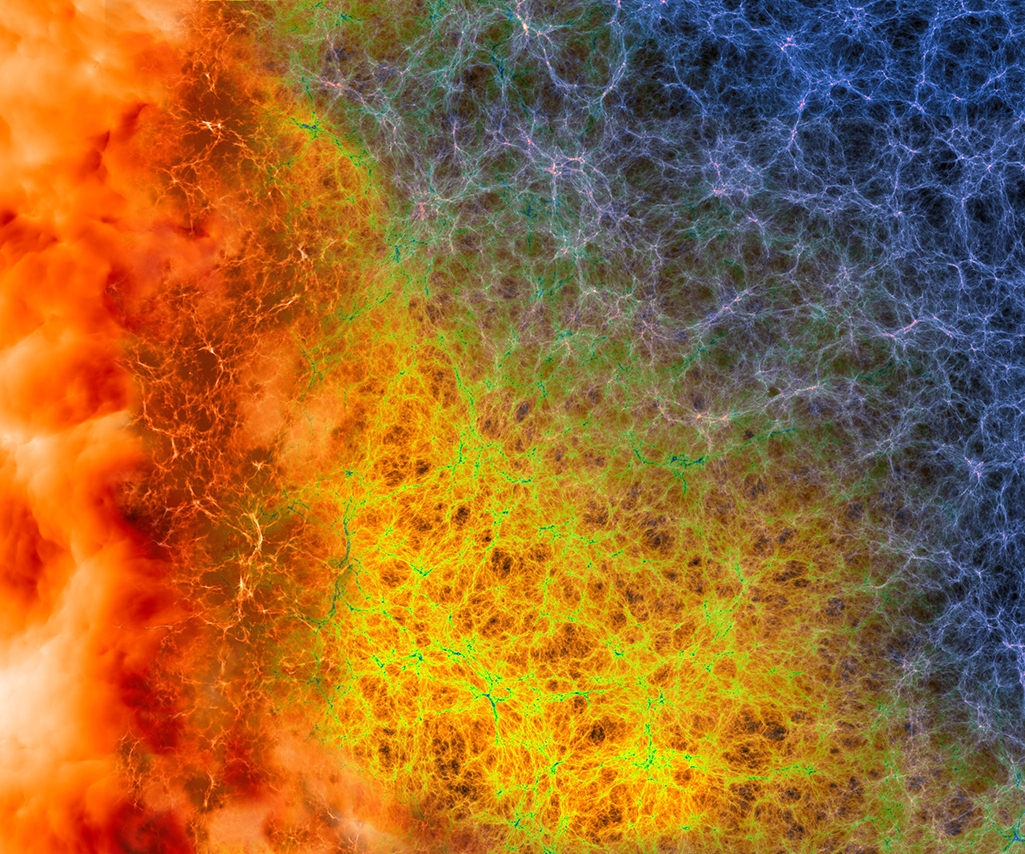Two new Department of Energy-sponsored telescopes, the Dark Energy Spectroscopic Instrument (DESI) and the Vera C. Rubin Observatory, will map cosmic structure in unprecedented detail. At Argonne and Lawrence Berkeley national laboratories, teams have developed a pair of the world’s most powerful cosmological simulation codes and are ready to translate the telescopes’ tsunami of observational data into new insights.
“Our job is to provide the theoretical backdrop to these observations,” says Zarija Lukić, a computational cosmologist in Berkeley Lab’s Cosmology Computing Center and a member of the Physics Division’s Cosmology Group. “You cannot infer much from observations alone about the structure of the universe without also having a set of powerful simulations producing predictions for different physical parameters.”
Lukić is a lead developer of Nyx, named after the Greek goddess of night. For more than a decade the Nyx group has collaborated with the hardware/hybrid accelerated cosmology code, or HACC, team at Argonne, co-led by computational cosmologist Katrin Heitmann, who is also the principal investigator for an Office of Science SciDAC-5 project in High Energy Physics (HEP) that will continue to advance code development.
With a computing time grant from the ASCR Leadership Computing Challenge (ALCC), the Nyx and HACC teams are fine-tuning their codes, readying them to tease out cosmic details from incoming DESI and Rubin Observatory data.
Read the full article:
Cosmic coding: Berkeley Lab and Argonne computational cosmologists help astronomers turn observation into insight.
March 21, 2023 / DOE Office of Science ASCR Discovery
